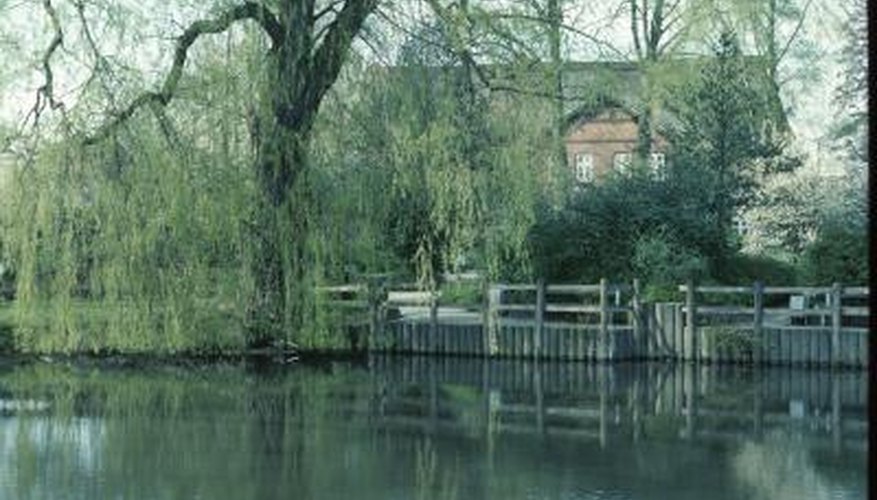Weeping willows (Salix spp.) are beautiful trees that can add a level of majesty to your property. They require a location with plenty of space to grow since they have a large network of roots. Weeping willows can be difficult to grow not only because they need a good deal of water to survive, but they are also highly susceptible to willow blight.
Identification
Willow blight is the combination of two diseases, willow scab and black canker. In many cases, these diseases occur together and the term "willow blight" is applied to the simultaneous infection. Both diseases are quite serious as they can cause serious dieback, loss of leaves and even the eventual death of your weeping willow tree. Both diseases are fungal in origin and both have similar symptoms. They can be controlled, however, with both cultural and chemical treatment.
- Willow blight is the combination of two diseases, willow scab and black canker.
- In many cases, these diseases occur together and the term "willow blight" is applied to the simultaneous infection.
Willow Scab
Willow scab is an infection caused by the fungus Venturia saliciperda. It is similar to the fungus that causes scab on apples and crabapples. It lives in dead twigs over the winter and then emerges in the early spring, infecting new shoots. Willow scab kills new leaves as they emerge, causing them to shrivel up and then drop off. Like all fungal infections, willow scab is most prominent when the weather is wet.
- Willow scab is an infection caused by the fungus Venturia saliciperda.
- It is similar to the fungus that causes scab on apples and crabapples.
Black Canker
Glomerella miyabeana is the name of the fungus that causes black canker. While willow scab occurs in the early spring, black canker does not appear until the late summer and makes up the bulk of willow blight symptoms. Black canker first appears as black spots that then grow and then cover the entire surface of the leaf. Once they are black, the leaves will shrivel up and then die. Black canker also can kill large and woody stems, something willow scab cannot do.
- Glomerella miyabeana is the name of the fungus that causes black canker.
- Black canker first appears as black spots that then grow and then cover the entire surface of the leaf.
Control
Using fungicide at the proper time is one way to prevent willow blight from affecting your tree. Repeated applications of the fungicide Mancozeb, following the instructions on the product's label, can help curb willow blight. Pruning away infected parts of the tree can also prevent the spread of disease. Cutting down excessive moisture will also prevent the disease. Avoid mulching too close to the base and do not saturate the tree with water during hot summers.
- Using fungicide at the proper time is one way to prevent willow blight from affecting your tree.
